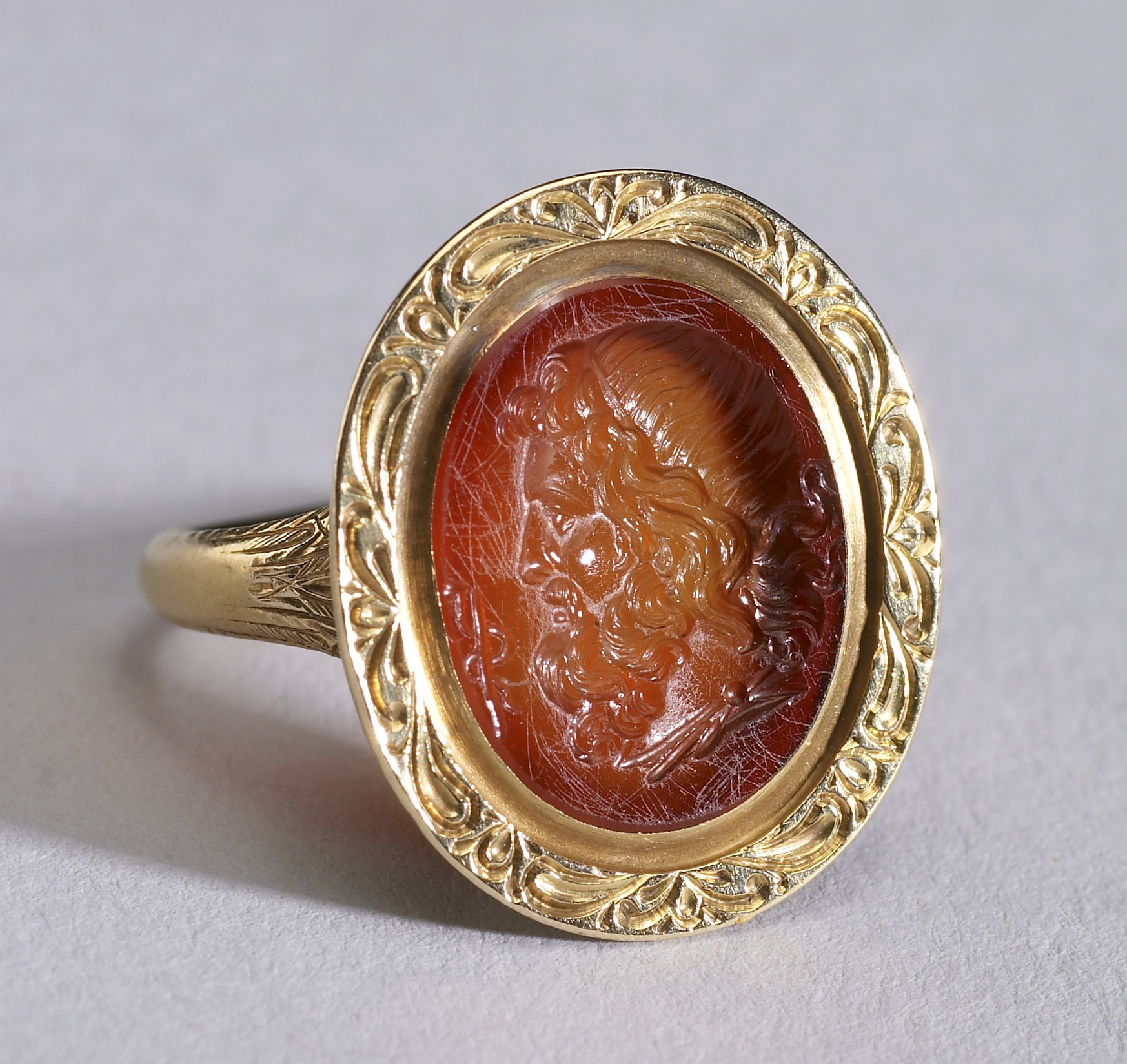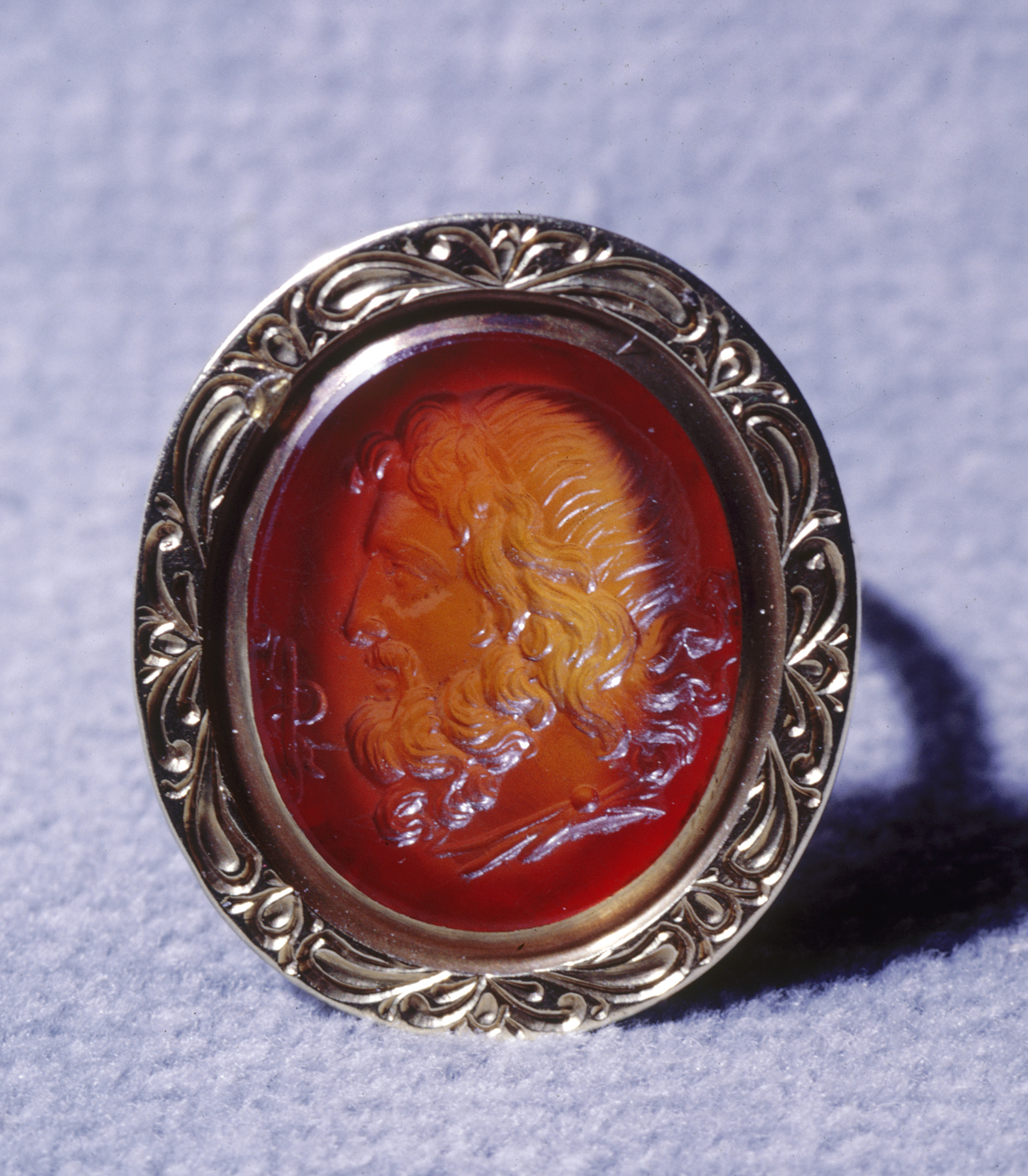Ring with Intaglio Showing Head of Asclepius
18th-century gem carvers sometimes depicted ancient subjects to appeal to gem collectors with antiquarian tastes. This intaglio portrays Asclepius, Greek god of medicine and healing, in profile. Asclepius’s attribute, a serpent entwined around a rod, appears at left. The symbol, which continues to be used in medicine today, has generated different interpretations, but it could be read as a symbol of renewal, as snakes shed their skins. This gem was part of the duke of Marlborough’s famous collection in England.
Provenance
Provenance (from the French provenir, 'to come from/forth') is the chronology of the ownership, custody, or location of a historical object.
George Spencer, fourth Duke of Marlborough, Blenheim Palace, Oxfordshire, by 1817, [mode of acquisition unknown] [Marlborough no. 251]; George Spencer-Churchill, fifth Duke of Marlborough, Blenheim Palace, Oxfordshire, 1817, by bequest; George Spencer-Churchill, sixth Duke of Marlborough, Blenheim Palace, Oxfordshire, 1840, by bequest; John Spencer-Churchill, seventh Duke of Marlborough, Blenheim Palace, Oxfordshire, 1857, by bequest; Sale, The Marlborough Gems, Christie, Manson & Woods, London, 28 June 1875, p. 38, lot 251; David Bromilow, Bitteswell Hall, Leicestershire, ca. 1875, by purchase; Julia Bromilow Jary, Bitteswell Hall, Leicestershire, 1898, by bequest; Sale, The Marlborough Gems Purchased by the Late David Bromilow, esq., Christie, Manson & Woods, London, 26 June 1899, p. 43, lot 251; Henry Walters, Baltimore, 1899, by purchase [Dikran Kelekian as agent]; Sadie Jones (Mrs. Henry Walters), New York, 1931, by bequest; Joseph Brummer, Paris and New York, 1941, by purchase [Brummer inv. no. N5143a]; Walters Art Museum, 1942, by purchase.
Exhibitions
| 2016 | Madame de Pompadour, Patron and Printmaker. The Walters Art Museum, Baltimore. |
| 1979-1980 | Jewelry - Ancient to Modern. The Walters Art Gallery, Baltimore. |
Conservation
| Date | Description | Narrative |
|---|---|---|
| 8/18/2015 | Examination | Examined in preparation for exhibition. |
| 8/18/2015 | Examination | Examined |
| 10/25/2015 | Treatment | An impression was made of the intaglio for purposes of exhibition. The object was cleaned afterward. |
| 10/25/2015 | Treatment | Cleaned |
Geographies
Europe (Place of Origin)
Measurements
Intaglio in gold setting H: 13/16 × W: 11/16 × D: 3/16 in. (2.1 × 1.8 × 0.4 cm); Ring H: 13/16 × W: 3/4 × D: 13/16 in. (2.1 × 1.9 × 2.1 cm)
Credit Line
Museum purchase [formerly part of the Walters Collection], 1942
Location in Museum
Charles Street: Second Floor: 18th- and 19th-Century Treasury
Accession Number
In libraries, galleries, museums, and archives, an accession number is a unique identifier assigned to each object in the collection.
In libraries, galleries, museums, and archives, an accession number is a unique identifier assigned to each object in the collection.
42.1108






